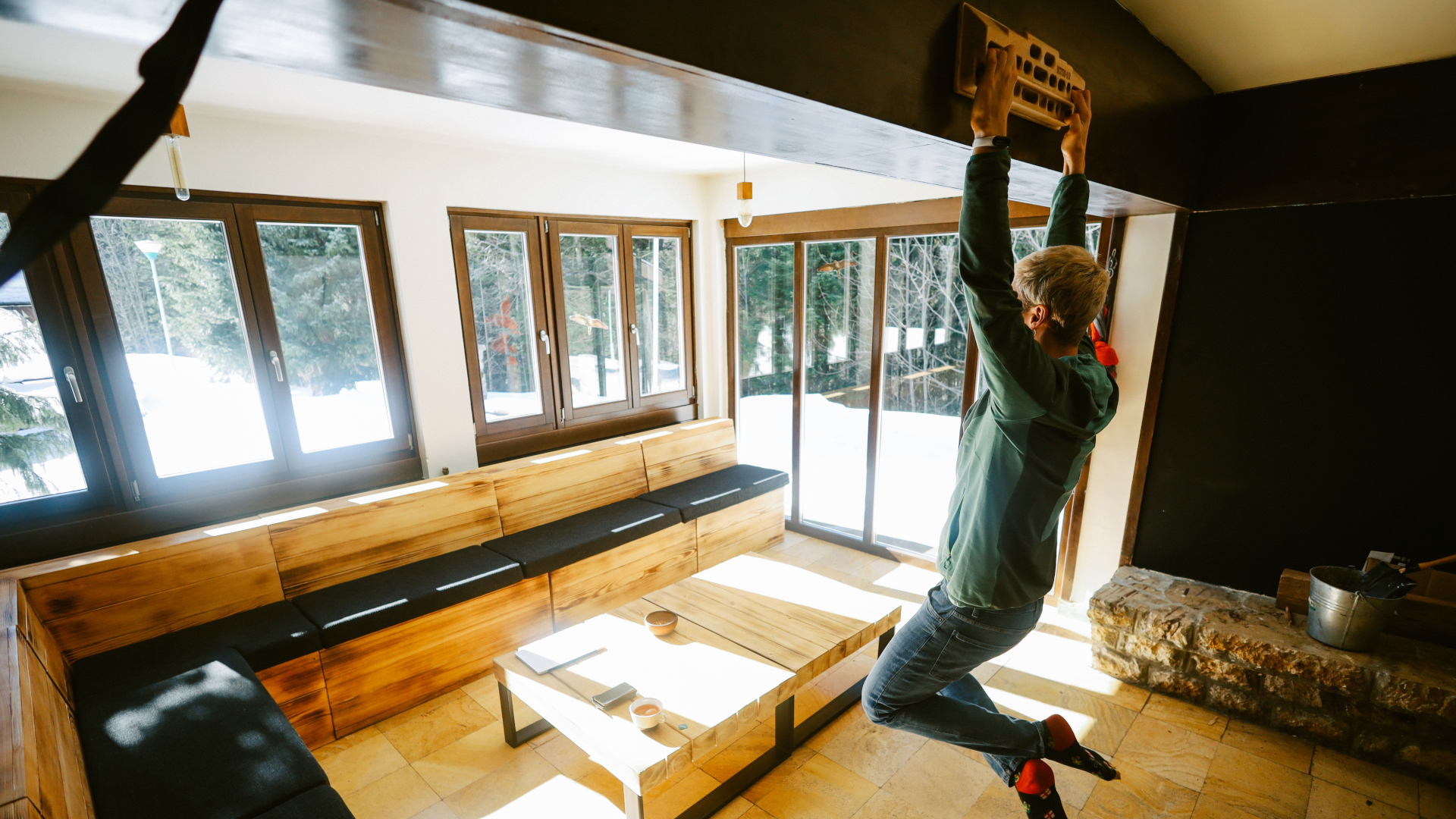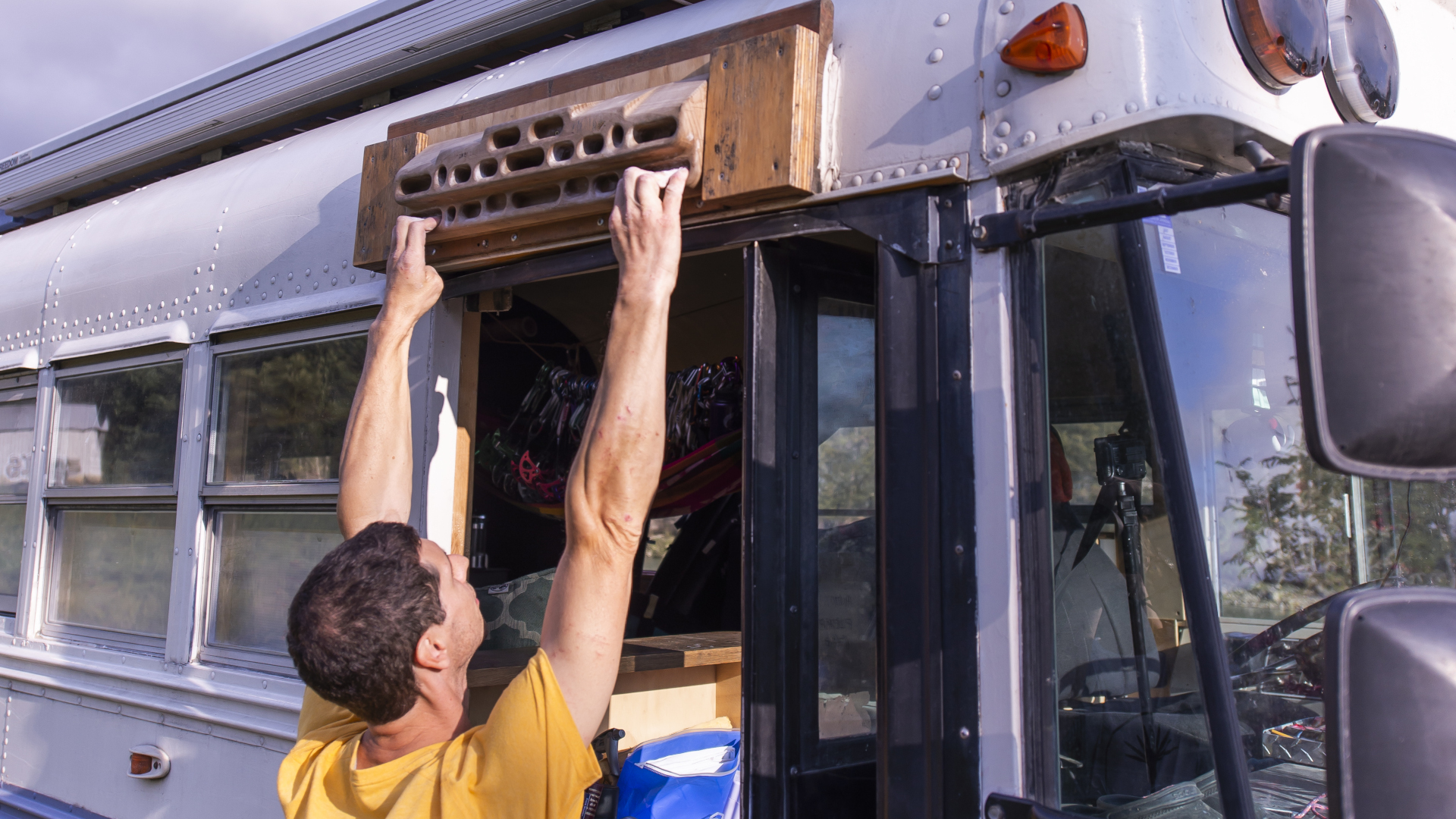Hangboarding: how effective is it for rock climbers?
We explain what hangboarding is and when you might want to try hangboarding to improve your finger strength for those crafty crimps, pinches and pockets

One of the cruel blows of rock climbing is that the better you get, the harder it becomes. You get bored with the same old routes and the new ones get steeper and longer and the holds grow smaller and further apart. You get less and less of those lovely big jug holds that you used to use to haul yourself up the wall and in their place, loads of tiny crimps, pinches, slopers and pockets that require a lot more finger strength. If you’ve been finding that your finger strength seems to be the main barrier between you and the next climbing grade, you might be considering hangboarding.
What is hangboarding?

Just as it sounds, hangboarding is a form of training in rock climbing where you hang from a board in order to increase your finger strength. A hangboard, otherwise known as a fingerboard, is usually made from plastic or wood and often just looks like a small chunk of an indoor climbing wall – though some more basic ones just look like a wooden rail – that you attach to a wall at home. You’ll usually affix it above a door so that you have space to hang from it, then you can integrate hangboarding sessions into your routine where you’ll essentially do short intervals spent hanging in different holds.
There are loads of different hangboarding programs out there, but essentially you’ll warm up with some easy climbing or a few dead hangs and pull ups using the the top of the board (not any of the small holds) then pick a grip that you want to work on and hang for up to 10 seconds, take a few seconds to rest and repeat that 4-6 times. Rest for a few minutes then do another set with a different – or smaller – hold.
When you’re hanging, you want to keep your elbows a little bent and pull your shoulders down so that you’re recruiting bigger muscles like your biceps, rhomboids and lats – otherwise, you’ll just be hanging your full body weight on the small tendons in your fingers and they’ll be at risk for tendon strains and ruptures.
How effective is hangboarding?

How effective any tool is obviously depends on how you wield it, and hangboarding certainly can be effective in improving your finger and hand strength in a static hold, but it really all depends on what you’re trying to accomplish. Let’s say there’s a small overhang at the wall that’s been defeating you for weeks. The final move to send it is a great big horn that you know you can just haul yourself up with, but before you ever get to it you lose your grip on a little pocket hold and down you go. Training your fingers to hang for longer by using a hangboard could help you.

But let’s say that getting your hand up on the horn isn’t the problem at all. Rather, once you have the horn you’ve only got one climbing shoe jammed into a tiny toe hold, the other foot is free and you really need power to pull yourself up. In this case, hangboarding won’t do you much good at all since it doesn’t help to develop power and dynamic movement – you’d be better off doing pull ups on a bar at the gym and climbing more.
How effective hangboarding is really depends on your goals, and your goals should be determined by knowing your weaknesses.
All the latest inspiration, tips and guides to help you plan your next Advnture!
Should beginners use hangboards?
Hangboarding is not for beginners. If you are new to rock climbing, the best way to improve is to start with easy grades and climb regularly. When a route that used to feel hard starts to feel easy, it’s time to progress to a harder route. If you’re a more advanced climber and you’ve reached a plateau, you need to identify what is preventing you from progressing. If it’s finger strength, then you might incorporate hangboarding into your routine.
How often should you use a hangboard?

As we explain in our article on Overtraining Syndrome, how often you should use a hangboard really depends on how advanced you are and how often you climb to begin with. However, starting with one session a week is probably plenty. Unfortunately, hangboarding can be easy to overdo if the hangboard is in your home, because it’s staring at you all day long, and it will feel tempting to just hop on it every time you walk past it. Plus, a hangboarding session also takes up much less time than going to the wall and climbing for hours, but it’s important not to overdo it and end up nursing an injury.
If you are hangboarding more than once a week, make sure you leave at least two days between sessions to allow your fingers to recover and if you feel any pain in your fingers, you should stop immediately. Remember: the goal here is to get you climbing more, not less.
Julia Clarke is a staff writer for Advnture.com and the author of the book Restorative Yoga for Beginners. She loves to explore mountains on foot, bike, skis and belay and then recover on the the yoga mat. Julia graduated with a degree in journalism in 2004 and spent eight years working as a radio presenter in Kansas City, Vermont, Boston and New York City before discovering the joys of the Rocky Mountains. She then detoured west to Colorado and enjoyed 11 years teaching yoga in Vail before returning to her hometown of Glasgow, Scotland in 2020 to focus on family and writing.

